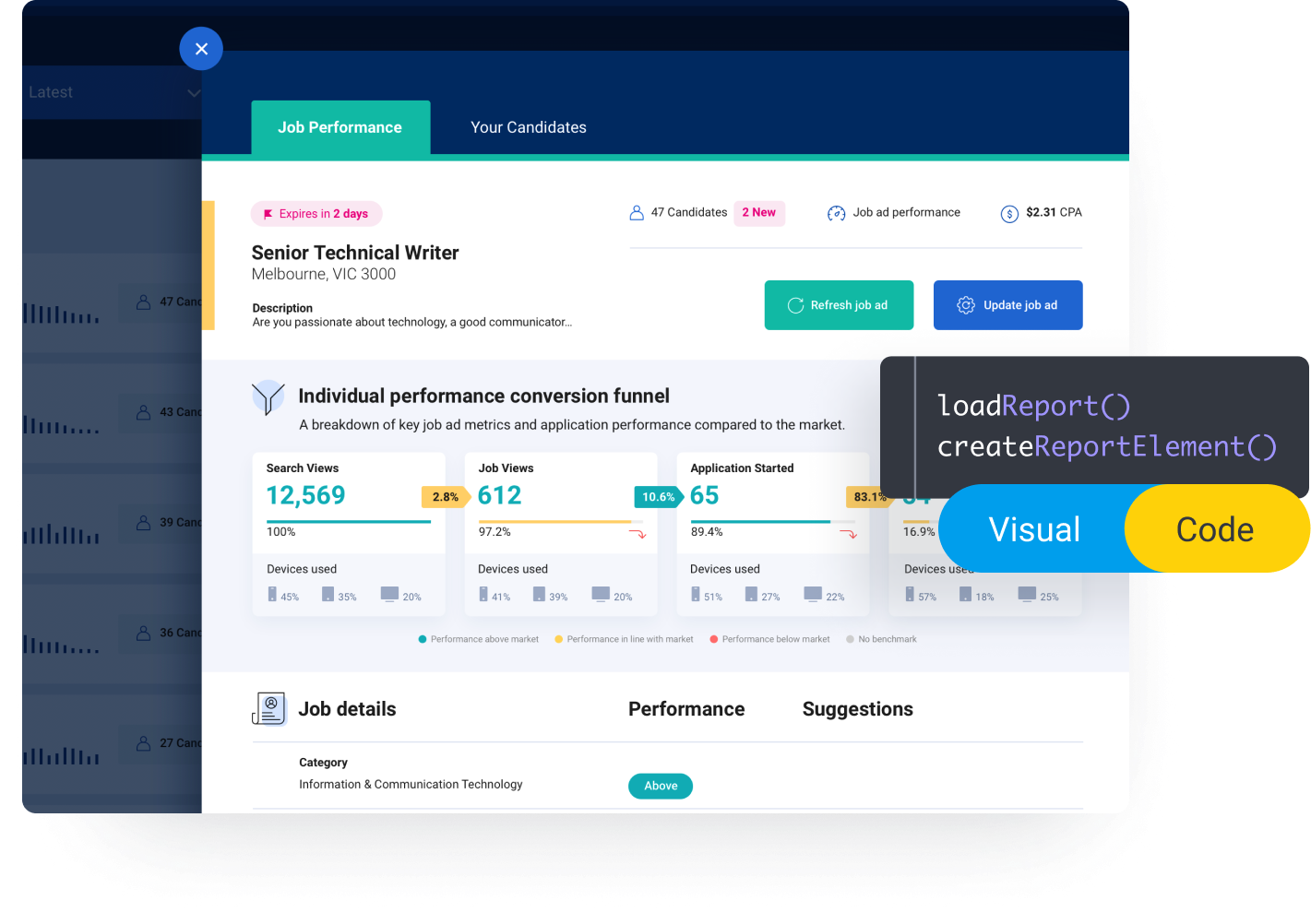Glossary
White label business intelligence (BI)
White label business intelligence (BI) is a type of business intelligence platform that is designed to be rebranded into an existing business application or software product and visually re-styled in a way that makes it appear as a native, proprietary feature to end-users. This approach to analytics integration is considered synonymous with embedded analytics.
A white label BI platform typically offers extensive customization and design options to ensure it blends in with the existing user experience, both aesthetically and functionally, when embedded into software, such as the ability to remove the BI platform’s branding entirely. This allows businesses to sell custom OEM analytics as if it was their own developed solution, rather than it appearing or being known to the end-user as an external third-party tool.
What are the key features of white label business intelligence?
The level of capability and customization afforded by white label business intelligence platforms varies between vendors, but there are several key characteristics that define white label BI solutions and place them apart from standalone business intelligence software. This includes:
Rebranding: The ability to customize the look and feel of the BI solution to match the branding of the host application (logos, colors, fonts, and more), which includes visual and formatting elements and, in most cases, the user interface.
Customization: While rebranding focuses on visual appearance, some white label integration solutions also offer customization options for functionality, allowing vendors to tailor the BI features to their specific needs.
Integration: Seamless integration with the host application, so that users can access BI functionality without leaving the application’s environment. This often involves APIs and other integration mechanisms.
Embedded Analytics: White-label BI is a subset of embedded analytics, meaning the analytics functionality is directly embedded within the application, rather than existing as a separate tool.
Multi-tenancy: Serving multiple customers or clients from a single instance of the white-label BI solution is multi-tenancy. This is crucial for software-as-a-service (SaaS) providers.

An example of white label business intelligence using the Yellowfin BI solution.
Why use white label business intelligence?
White label BI software and the model of white label analytics is sought for the flexibility and functionality it offers to businesses. It allows independent software vendors to offer their customers powerful data insights and reporting under their existing user experience, and enterprise companies to provide users of their systems an analytics module that sits within their core workflows, without having to develop an entire specialized BI component themselves.
With white-label BI software, organizations can offer specialized business intelligence technologies that are seamlessly merged into their own software to match the look and feel of the rest of the application experience. White-label BI takes these core BI capabilities, which include data collection, data visualization, reporting and data analysis, and packages them in a way that allows companies to integrate them seamlessly instead of having to build its own BI tools from the ground up. The ability to re-style this solution with the existing branding, including logos, colors, and fonts, ultimately helps create a consistent user experience and make data analytics a closer part of the everyday application experience.
In comparison, traditional or legacy BI solutions are entirely separate experiences that require the end-user to switch software applications to access. Because of this, they are not necessarily associated with the user experience of the existing software application or business system,
Several analytics vendors, like Yellowfin BI, offer white label business intelligence for embedding. Each vendor delivers varying levels of flexibility for rebranding from simple logo and colour changes to being able to even access the CSS and HTML of the platform to change fonts, build in bespoke actions, and create pixel-perfect dashboard designs.
Top resources for understanding white label business intelligence
White Label OEM Analytics for Software Companies
White Label Analytics: What It Is, Why It Matters & 5 Key Benefits
Building a Killer App with White Label BI
Learn more about Yellowfin’s embedded analytics capabilities